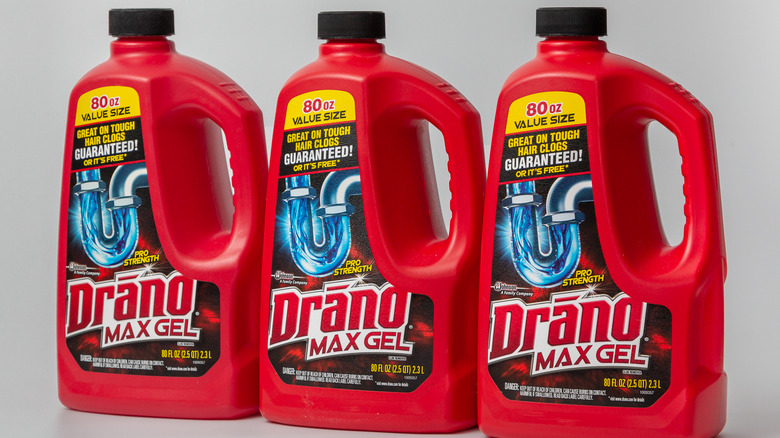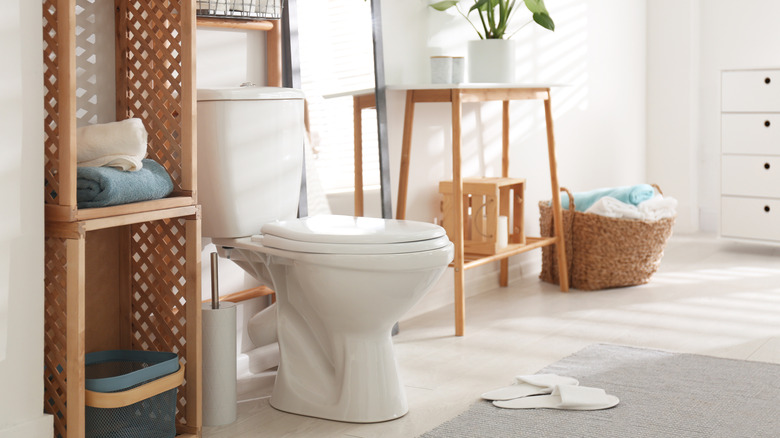This Is What Happens When You Put Drano In Your Toilet
We may receive a commission on purchases made from links.
When toilet issues happen, whether it's a gurgling porcelain throne or a nasty clog, our first instinct is to find an easy solution to the problem — especially if you are at a friend's or relative's house, which can be downright embarrassing. "The first thing to remember when you clog the toilet in another person's house is to breathe and don't panic," Mr. Rooter franchisee Jamie Smith advised in an interview with Today.
It's safe to say that there are the good old-fashioned ways to unclog a toilet: with a trusty plunger, a mix of vinegar and baking soda (which is our go-to for many clogs), and the popular combo of hot water and dish soap, according to Plumbing Troopers. But what about Drano? You may think to reach for it and believe it's a suitable solution for most sink clogs, but here's what happens when you put Drano in a toilet.
Save Drano for your sink pipes
Drano can be an excellent option for clearing out your sink drain pipes; however, it is definitely not recommended for clearing toilet clogs. As plumbing company R.S. Andrews explains, Drano wasn't created for toilet drains and the product most likely wouldn't even reach the clog anyway. Another plumbing company, Pippin Brothers, says that Drano can cause breakage on your toilet's porcelain and even make your PVC pipes get soft, which would be pretty costly to fix. What's worse is that if you mix Drano accidentally with another product while trying to unclog your toilet, it could have a chemical reaction. Or, if you try plunging it, it could splash you, harming your skin.
However, if your sink and toilet share a joint pipe, pouring Drano down the sink could help unclog your toilet. As one Amazon reviewer said, "My toilet was hopelessly clogged, and plunging made the bathroom sink bubble. So, I poured this product into the sink to get at the common pipe. Within seconds, the toilet flowed free." So as long as you're not putting Drano down your toilet, it may work after all if you have a similar setup.

